Production Year 2013
 The Mark of Beauty | Confectionary of Kanazawa
The Mark of Beauty | Confectionary of Kanazawa
DC331318![]()
美の壺 | 金沢の和菓子 [NHK]
![]()
![]()
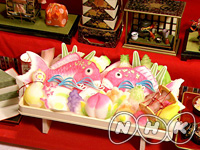
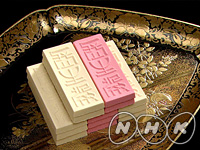
|Length : 29min. |Year : 2013 |
Kanazawa is one of Japan's top three confectionary cities. This former castle town with more than 400 years of history is bustling with beautiful Japanese confectionaries that owe their origin to the snowy Kanazawa scenery. The city offers a myriad of Japanese sweets: from candy adorned with vivid colors that stand out in the snow; rakugan, the confectionary of supreme elegance that was loved by samurais; to cakes that add color to a tea ceremony. As Kanazawa is a city with a tradition of handicraft production, the episode also introduces local wares to serve confectionary on. In addition, we follow a confectioner as he goes through trial and error to produce confectionary to best match a Kanazawa-made ware. We take a close look at the former castle town's sweets during winter, when Kanazawa is at the prime of its beauty.
 The Mark of Beauty | The Donabe Pot
The Mark of Beauty | The Donabe Pot
DC331319![]()
美の壺 | 土鍋 [NHK]
![]()
![]()
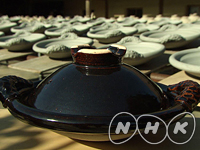
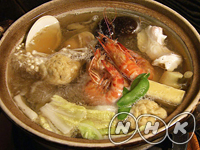
|Length : 29min. |Year : 2013 |
Winter in Japan exists together with hot pot dishes, and the main character of such delicious dishes is the donabe earthenware pot. While it is a cooking utensil, the donabe is at the same time a serving dish ensconced at the center of the dining table, and adored by everyone. That is why the donabe has needed to have the beauty to adorn the dining table, besides the practical features to tolerate heat, retain heat, and not break. This episode features the soft-shelled turtle hot pot that is served at an established Japanese restaurant; the beauty in donabe pots of Iga City, loved by many prominent individuals; and other unique earthenware pots from around the world. We dive into the unknown world of beauty that lies in the simple and warm donabe earthenware pot.
 The Mark of Beauty | Sakura
The Mark of Beauty | Sakura
DC331320![]()
美の壺 | 桜 [NHK]
![]()
![]()
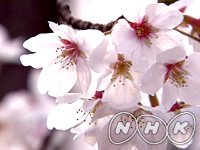
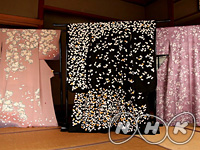
|Length : 29min. |Year : 2013 |
In Japan, the sakura cherry blossom is synonymous with spring. The people of Japan have long adored the sight of how the sakura blossoms bloom proudly at once, before soon dropping their petals ever so elegantly. Such beauty of the sakura has given birth to countless beautiful handicraft pieces. The sakura kanzashi hairpin, which features realistic, faint-colored sakura petals, is popular among young women. The delicate hue of the dyed fabric called sakurazome is produced using the color that dwells inside the trunk of sakura trees. We also introduce the mystical beauty the sakura reveals when it is viewed at night; it almost looks like the flowers are emitting light. Furthermore, we look at how the famous writer Chiyo Uno was so intrigued by the sight of falling sakura petals that she produced countless elegant kimonos of that theme. We thoroughly savor the beauty of the sakura, which never ceases to enthrall the people of Japan.
 The Mark of Beauty | Mount Fuji
The Mark of Beauty | Mount Fuji
DC331321![]()
美の壺 | 私の富士山 [NHK]
![]()
![]()
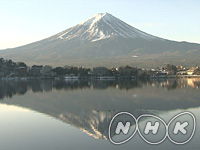
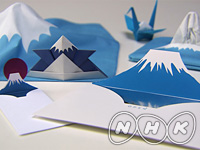
|Length : 29min. |Year : 2013 |
Mount Fuji has recently been named a UNESCO World Heritage site. The mountain has long been engrained in the Japanese soul as an object of worship and as the source of countless pieces of art. This episode takes a look into the deep relationship Fuji shares with water, which is indispensable to the view of the mountain. It also explores the reason why many Japanese people share the image of the mountain as having a summit with three peaks. From the Middle Ages to the present day, Mount Fuji has been the theme for many pieces of art produced by countless painters and creators, and as such, has been admired by the people in everyday life. We delve into the deep beauty of the mountain through the keywords of "water", "worship", and "design".
732 days: The lives of 3 orphans post earthquake
DC371311![]()
3人で生きる 震災孤児 兄弟が歩んだ732日 [KHB]
![]()
![]()
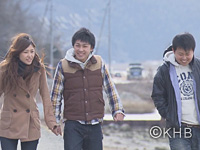
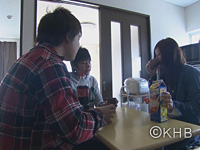
|Length : 24min. |Year : 2013 |
March 11, 2011. The huge tsunami that hit in the Tohoku earthquake swept away the parents of many children, leaving large numbers orphaned. There are more than 241 children in Miyagi, Iwate and Fukushima prefectures whose parents were either killed in the disaster or remain missing. How did these children face the aftermath of the disaster, and move on without their parents?
Shohei Takeyama (19 at the time of the disaster), lives in Ishinomaki City in Miyagi Prefecture, and lost both his parents and grandfather to the tsunami. His younger sister Yuuki is a high school student, while brother Naoki is in junior high school.
"All I want is for us to live a normal life. At the very least, I want to give my brother and sister a normal upbringing. I feel it is what I should do for my parents."
Shohei decides to become his siblings' legal guardian. Initially, Naoki and Yuuki were taken to live at an aunt's home in Ishinomaki, but once Shohei turns 20, he becomes their guardian by law (as they are both still minors), in place of their parents.
A year after the disaster, they leave their home in Ishinomaki and move into an apartment together in Iwate Prefecture's Sendai City.
Yuuki enters the same university as Shohei, and is busy with study as well as part time work. Naoki has changed schools, and is taking the first steps toward high school entrance exams, while Shohei is in the middle of intense job hunting. He hopes to find work at a company with no risk of being transferred outside Iwate Prefecture, so they can continue living together.
The three siblings suddenly had their family torn apart forever on that fateful day. This is a document of the reality they face living without their parents over the two years following the disaster: holding the memories of their parents in their hearts, while supporting each other as a family.














